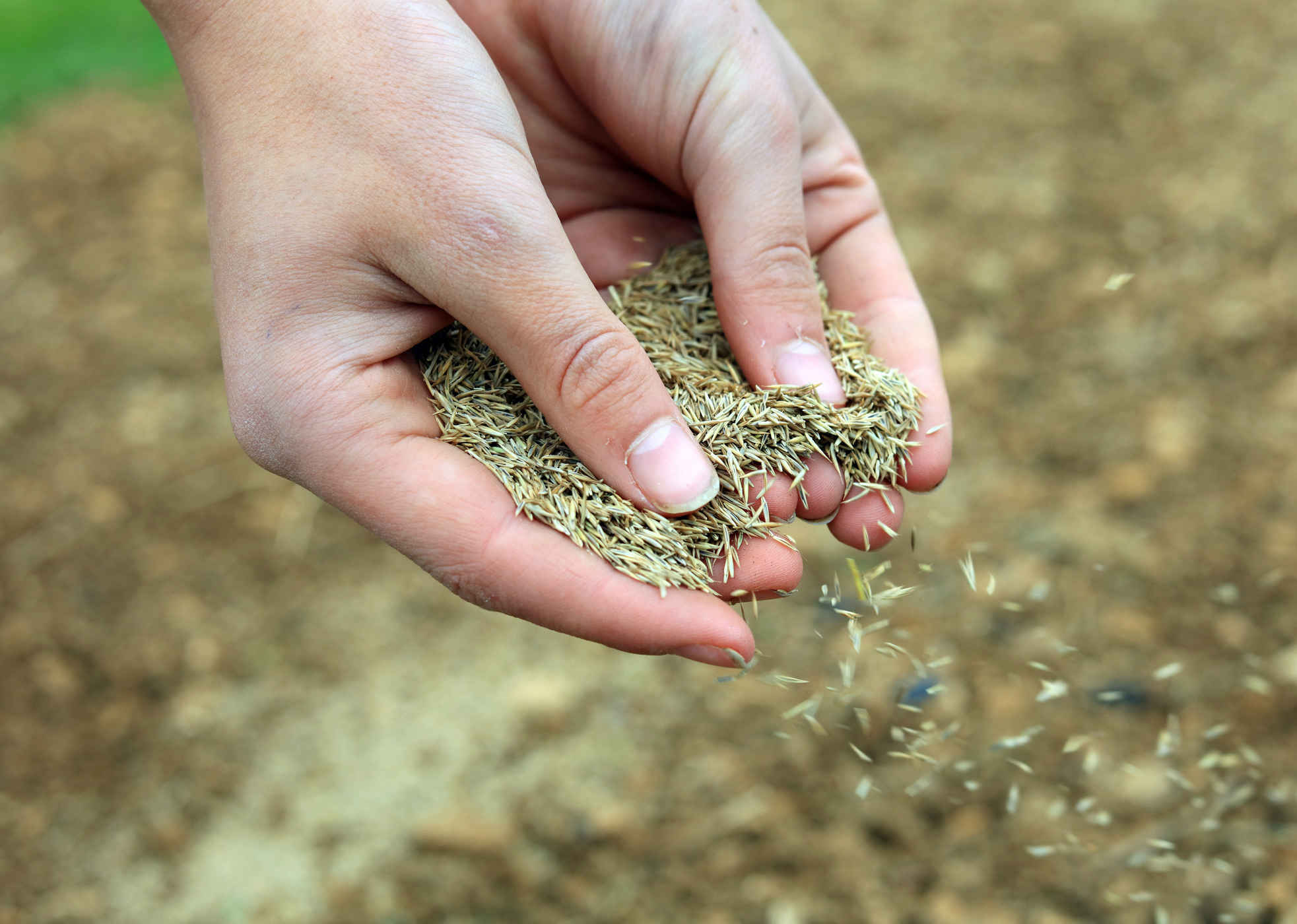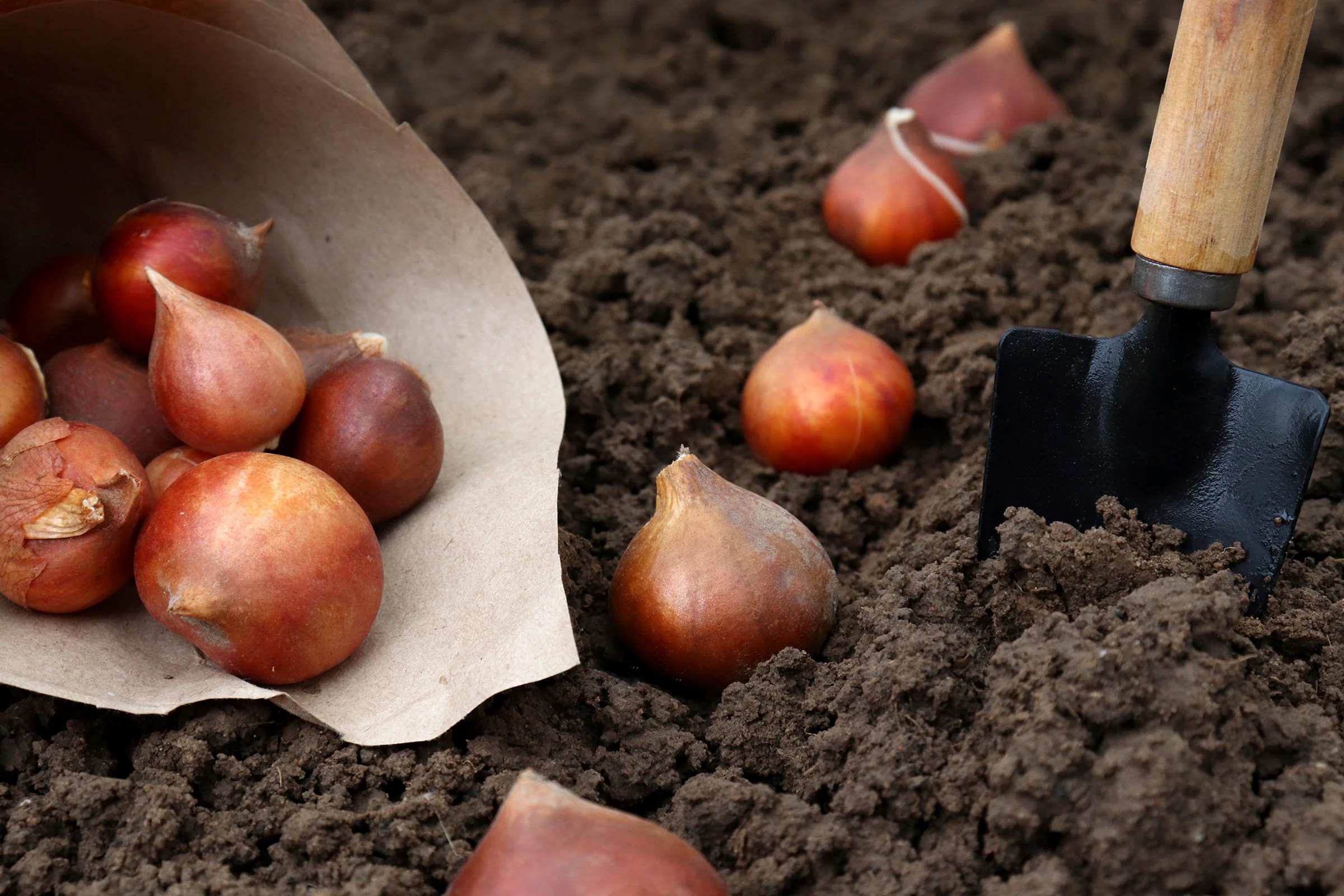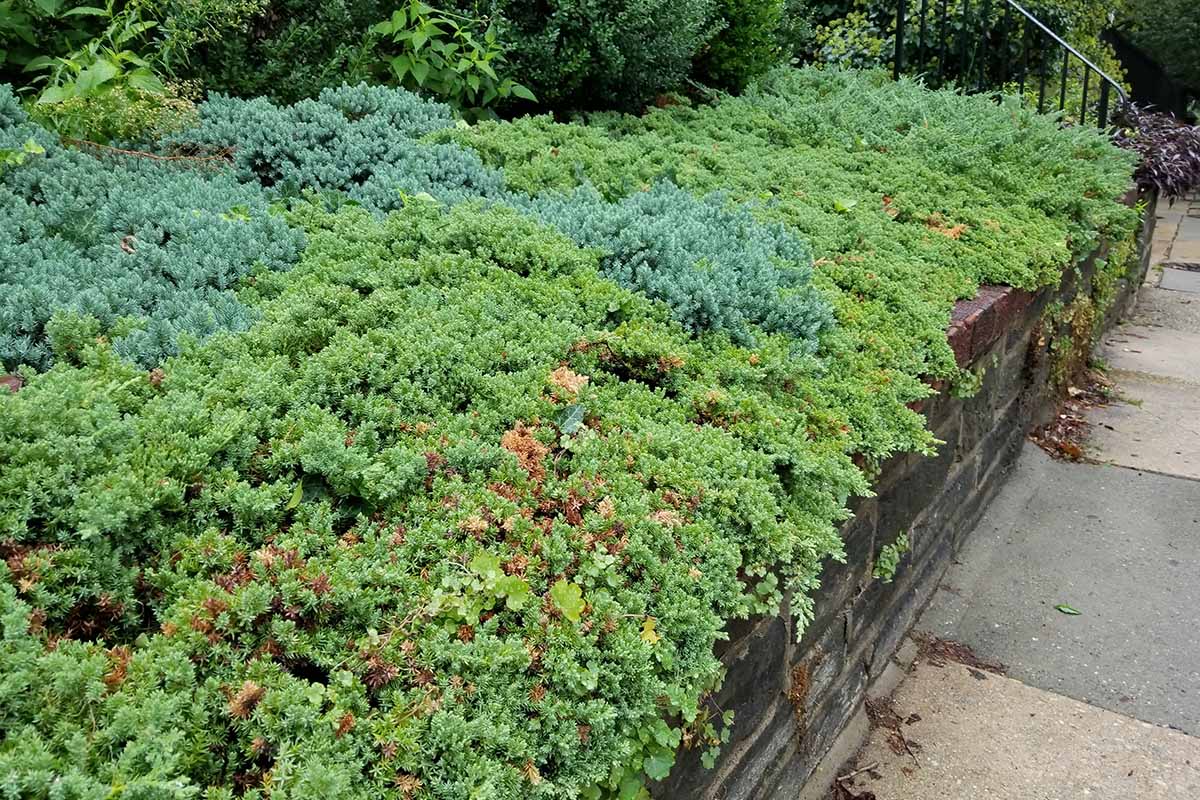Home>Types of Gardening>Ornamental Gardening>When Can You Plant Dahlia Bulbs


Ornamental Gardening
When Can You Plant Dahlia Bulbs
Published: January 23, 2024
Discover the best time to plant Dahlia bulbs for a stunning ornamental garden. Get expert tips and step-by-step instructions for optimal planting.
(Many of the links in this article redirect to a specific reviewed product. Your purchase of these products through affiliate links helps to generate commission for Chicagolandgardening.com, at no extra cost. Learn more)
Table of Contents
Introduction
Welcome to the wonderful world of ornamental gardening! If you have a passion for creating a beautiful and vibrant outdoor space, then you are in for a treat. One of the most popular and stunning flowering plants you can grow in your garden is the dahlia.
Dahlias are known for their show-stopping blooms that come in a wide range of colors and sizes. From delicate and dainty to bold and dramatic, there is a dahlia variety to suit every gardener’s taste. These versatile flowers can be used in flower beds, borders, containers, or even as cut flowers to brighten up your home.
But before you can enjoy these mesmerizing flowers, it is important to understand the basics of planting and caring for dahlia bulbs. In this article, we will take you through everything you need to know, from choosing the right time to plant to the essential steps for successful growth and bloom.
Whether you are a novice gardener or have a green thumb, this guide will provide you with the knowledge and confidence to create a stunning display of dahlias in your own backyard. So, grab your gardening tools and let’s delve into the enchanting world of dahlia bulbs!
Understanding Dahlia Bulbs
Dahlia bulbs, also known as tubers, are underground storage structures that allow the plant to survive harsh conditions and grow anew in the following season. These bulbs are swollen underground stems that store nutrients and energy for the plant’s growth and development.
Dahlia bulbs come in a variety of shapes and sizes, ranging from small pea-sized tubers to larger, more established ones. The size of the bulb can determine the size and vigor of the plant it will produce. It is important to choose bulbs that are plump, firm, and free from any signs of damage or disease.
When selecting dahlia bulbs, you will also come across different classifications and types. Dahlia varieties are classified based on their flower forms, which can include decorative, cactus, pompon, single, and more. Each type has its own unique characteristics and charm, adding to the diversity and allure of these beautiful flowers.
It is worth noting that some dahlia varieties can be grown from seeds, but many gardeners prefer to start with tubers as they offer a faster and more reliable way to propagate the plants. By planting dahlia bulbs, you can ensure that you are getting true-to-type plants that will produce the same characteristics as the parent plant.
As with any plant, understanding the specific needs of dahlia bulbs is essential for their successful growth and blooming. Dahlias thrive in well-draining soil, preferably with a pH level ranging from 6 to 7. They require at least 6-8 hours of direct sunlight daily and perform best in moderate climates.
Additionally, dahlias are highly responsive to fertilizers. Incorporating organic matter, such as compost, into the soil prior to planting will provide the necessary nutrients and improve soil structure. Regular feeding with a balanced fertilizer during the growing season will promote healthy growth and abundant blooms.
By familiarizing yourself with the characteristics and requirements of dahlia bulbs, you can ensure that you are prepared to give them the optimal growing conditions they need to flourish. Now that you understand the basics, it’s time to dive into the next step: choosing the right time to plant.
Choosing the Right Time to Plant
The timing of when to plant your dahlia bulbs is crucial for their successful growth and blooming. Dahlias are tender perennials that thrive in warm soil and air temperatures, so it is important to wait until the risk of frost has passed before planting them outdoors.
In most regions, planting dahlia bulbs can begin in the spring after all danger of frost has subsided. This is typically when the soil has warmed up and the temperature stays consistently above 60°F (15°C). However, if you live in a colder climate or experience a late spring, you may need to delay planting until the soil has reached an optimal temperature.
Another factor to consider when determining the right time to plant your dahlia bulbs is the growth and development of the plant. Dahlia tubers should be planted when they have developed sprouts, also known as eyes. These eyes are small, pinkish buds that will emerge near the top of the tuber.
Inspect your dahlia bulbs carefully when you receive them, and if you notice any sprouts or eyes, it is a good indication that they are ready to be planted. If the tubers are dormant and have not yet developed eyes, you can start them indoors a few weeks before the expected planting date to encourage sprouting.
Furthermore, keep in mind that dahlias have a long growing season, often reaching their peak blooms in late summer or early fall. Planting dahlia bulbs early in the growing season allows them ample time to establish strong root systems and develop healthy foliage before the blooming season.
By selecting the appropriate timing for planting your dahlia bulbs, you can optimize their chances of thriving in your garden. Once you’ve determined the right time, it is essential to prepare the planting area properly to provide the best conditions for your dahlia bulbs.
Preparing the Planting Area
Properly preparing the planting area is essential for creating an ideal environment for your dahlia bulbs to thrive. Here are the key steps to follow:
- Select a Suitable Location: Choose a site that receives at least 6-8 hours of direct sunlight daily. Dahlias prefer full sun, but they can tolerate partial shade, especially in hotter climates. Ensure the location has well-draining soil to prevent waterlogging, which can lead to root rot.
- Clear the Area: Remove any weeds, rocks, or debris from the planting area. These can hinder the growth of your dahlia bulbs and compete for nutrients and water.
- Improve the Soil: Before planting, it is beneficial to amend the soil with organic matter, such as compost or well-rotted manure. This improves soil fertility, drainage, and moisture retention. Spread a layer of compost over the planting area and mix it into the top 6-8 inches of soil.
- Check Soil pH: Dahlias prefer slightly acidic to neutral soil with a pH level between 6 and 7. Use a soil testing kit to check the pH of your soil. If it is outside the desired range, you can adjust it by adding amendments like lime to raise the pH or sulfur to lower it.
- Consider Staking: Depending on the dahlia variety, some plants may require support to prevent them from bending or collapsing under the weight of their blooms. Install stakes or tomato cages around the planting area to provide support as the plants grow.
Preparing the planting area sets the foundation for healthy growth and development of your dahlia bulbs. Once the area is ready, it’s time to plant your dahlia bulbs and watch them flourish into beautiful, vibrant plants.
Planting Dahlia Bulbs
Planting dahlia bulbs is an exciting step that brings you closer to enjoying their stunning blooms. Follow these guidelines to ensure successful planting:
- Dig the Hole: Dig a hole that is about 6-8 inches deep and wide enough to accommodate the dahlia bulb. Space multiple bulbs at least 1-2 feet apart to allow room for growth.
- Position the Bulb: Place the dahlia bulb in the hole with the sprout side facing up. If there are multiple sprouts, position them facing up as well. Ensure that the eyes of the tuber are just below the soil surface.
- Backfill the Hole: Gently backfill the hole with soil, being careful not to damage the delicate sprouts. Lightly press the soil around the bulb to secure it in place.
- Water the Bulbs: After planting, give the newly planted bulbs a thorough watering. This helps settle the soil and provides the bulbs with much-needed moisture for rooting.
- Mulch the Area: Apply a layer of mulch, such as straw or wood chips, around the newly planted bulbs. Mulching helps conserve moisture, suppresses weeds, and insulates the soil, protecting the bulbs from temperature extremes.
It’s important to note that dahlia bulbs should not be planted too early if the soil is cold and wet, as this can lead to rotting. If you are unsure about the soil temperature, you can use a soil thermometer to ensure it is above 60°F (15°C) before planting.
Remember to label your dahlia bulbs if you are planting different varieties. This will help you keep track of their specific characteristics and colors as they grow and bloom.
Now that your dahlia bulbs are planted and settled in their new home, it’s time to provide them with the care they need to thrive. Let’s explore some essential care tips for your growing dahlia bulbs.
Caring for Dahlia Bulbs
Caring for your dahlia bulbs is essential to ensure their health and encourage optimal growth and blooming. Here are some important care tips to keep in mind:
- Watering: Dahlias require regular watering, especially during dry spells. Water deeply, ensuring the soil is evenly moist but not waterlogged. Avoid overhead watering, as wet foliage can lead to diseases. Instead, use a soaker hose or water at the base of the plants.
- Fertilizing: Regular fertilizing is important for dahlia bulbs to promote vigorous growth and abundant blooms. Apply a balanced liquid fertilizer every 2-3 weeks or use a slow-release granular fertilizer as directed. Avoid over-fertilization, as it can lead to excessive foliage growth and reduce flowering.
- Support and Pruning: As your dahlia plants grow, they may require support to prevent them from bending or breaking. Install stakes or cages early on to provide support. Additionally, remove any weak or damaged stems to encourage healthier growth and better airflow within the plant.
- Deadheading: To encourage continuous blooming, regularly remove faded flowers by cutting them back to a healthy set of leaves or buds. This process, known as deadheading, redirects the plant’s energy towards new growth and additional flower production.
- Protecting from Pests and Diseases: Monitor your dahlia plants for common pests and diseases such as aphids, slugs, powdery mildew, and botrytis. Take prompt action if you notice any signs of infestation or disease, using organic or chemical treatments as necessary.
Additionally, it’s important to keep the planting area weed-free, as weeds can compete for nutrients and water, impacting the growth and health of your dahlia bulbs. Regularly inspect the area and remove any weeds by hand or use an organic weed control method.
By providing adequate water, regular fertilization, proper support, and diligent care, your dahlia bulbs will reward you with beautiful blooms throughout the growing season.
However, it’s important to note that dahlia bulbs are not winter hardy in all regions. If you live in an area with harsh winters, you will need to carefully dig up and store the bulbs over the winter to protect them from freezing temperatures. This process, known as winterizing, ensures the bulbs remain dormant and ready for planting the following year.
Now that you’re equipped with the essential care tips for your dahlia bulbs, let’s move on to troubleshooting common problems you may encounter in your garden.
Common Problems and Solutions
While dahlia bulbs are relatively easy to grow, they can encounter a few common issues. Here are some of the problems you may encounter with your dahlia bulbs and their potential solutions:
- Rot and Disease: Overwatering or poorly draining soil can lead to bulb rot and various fungal diseases. To prevent this, ensure that the soil has proper drainage and avoid overwatering. If you notice signs of rot or disease, carefully dig up the affected bulbs and discard them. Treat the remaining bulbs with a fungicide as a precautionary measure.
- Pest Infestation: Aphids, slugs, and other pests can feed on dahlia foliage and stems, causing damage to the plants. Regularly inspect your plants for signs of pests and take appropriate action. You can manually remove pests, use organic insecticidal sprays, or introduce beneficial insects like ladybugs or lacewings to control the pests naturally.
- Poor Flowering: If your dahlia plants are not producing as many blooms as expected, it could be due to inadequate sunlight, over-fertilization, or overcrowding. Ensure your plants receive sufficient sunlight and adjust your fertilization schedule. If the plants are overcrowded, dig them up and divide them, giving each plant more space to grow.
- Foliage Diseases: Powdery mildew and botrytis are common foliage diseases that can affect dahlia plants. To prevent these diseases, ensure good air circulation around the plants by spacing them adequately. Water at the base of the plants rather than overhead, and remove any infected foliage promptly. Applying a fungicide labeled for dahlia plants can help control these diseases.
- Stunted Growth: If your dahlia plants are not growing as vigorously as expected, it could be due to nutrient deficiencies or poor soil conditions. Consider conducting a soil test to determine if any nutrients are lacking, and make appropriate amendments. Additionally, ensuring proper watering and adequate sunlight will promote healthy growth.
Remember that prevention is key when it comes to common problems with dahlia bulbs. Providing optimal growing conditions, regular monitoring, and prompt action can help minimize or prevent these issues. With a little care and attention, you can maintain healthy and vibrant dahlia plants in your garden.
Now that you are aware of the common problems and their solutions, you have all the tools to enjoy a successful and fulfilling experience with your dahlia bulbs. So, go ahead and let your garden blossom with the beauty of these captivating flowers!
Conclusion
Congratulations! You are now equipped with the knowledge and understanding to successfully plant and care for dahlia bulbs in your garden. These stunning flowers will add a touch of enchantment and vibrant colors to your outdoor space.
Remember, choosing the right time to plant your dahlia bulbs is crucial, ensuring they have optimal conditions to grow and bloom. Properly preparing the planting area, providing adequate care, and promptly addressing any problems that arise will help your dahlia bulbs thrive.
From understanding the structure of dahlia bulbs to selecting the perfect planting location, each step plays a vital role in their overall health and development. By watering appropriately, fertilizing regularly, and protecting your plants from pests and diseases, you will encourage vigorous growth and abundant blooms.
If you encounter any common issues, such as bulb rot, pests, or stunted growth, don’t panic. Troubleshooting and making necessary adjustments will help you overcome these challenges and maintain healthy dahlia plants. Prevention through proper care, including spacing, watering, and providing adequate sunlight, is key to avoiding many common problems.
So, grab your gardening tools and embark on this exciting journey of growing and enjoying the beauty of dahlia bulbs. Experiment with different varieties, colors, and arrangements to create a truly captivating garden masterpiece.
With patience, passion, and a little bit of care, you’ll be rewarded with an abundant display of magnificent dahlia blooms year after year. Happy gardening!



